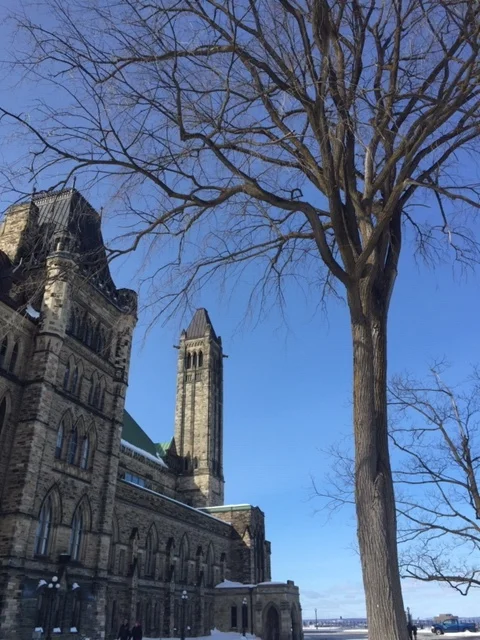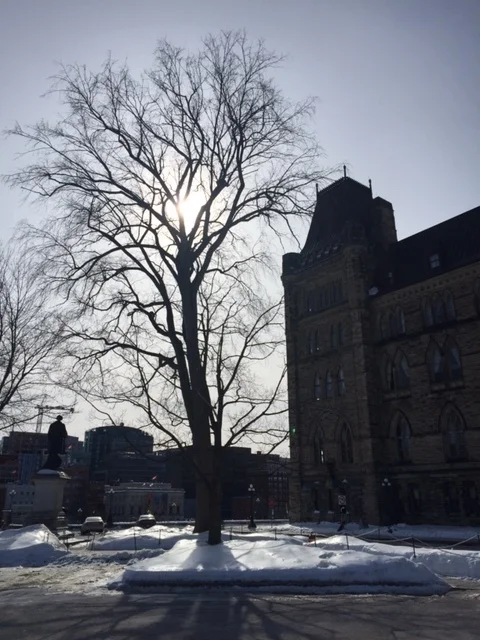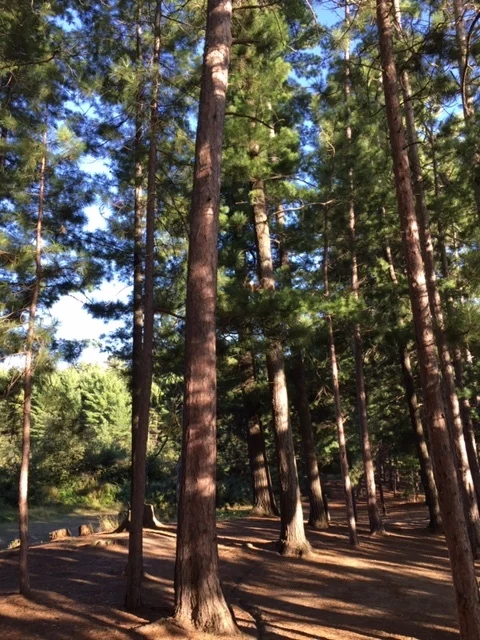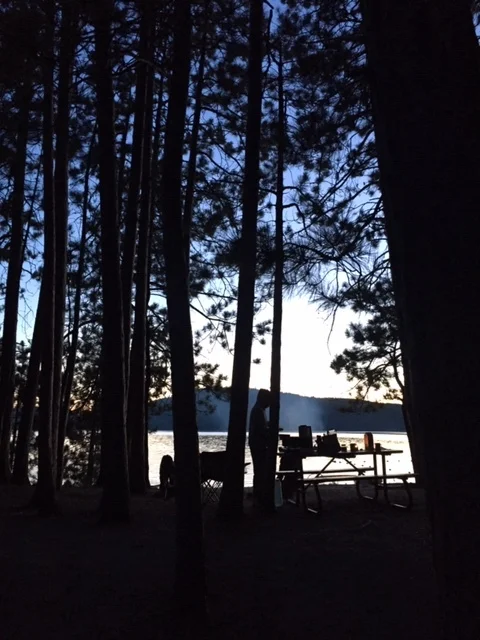Paul Johanis: Chair, Greenspace Alliance of Canada’s Capital
“The loss of mature trees in the core of Ottawa, and in urban centres across Canada, has reached crisis proportions. Community Associations are desperate to stop the loss of tree canopy in their neighbourhoods, and are aghast to see the same dynamic being played out on Parliament Hill, wherein a builder with a plan always trumps greenspace.”
Photographs: Tree Fest Ottawa
Q.1. What is Greenspace Alliance of Canada’s Capital and what does it do?
We are a 100% volunteer incorporated non-profit dedicated to protecting and preserving greenspace.
Q.2. In your opinion, why is greenspace in urban areas important?
We believe that urban greenness is essential for a community’s quality of life, contributing to our personal, social, economic, cultural and spiritual well-being. It also connects us with the natural and cultural history of our region. Preserving and increasing greenspace is a fundamental element in the fight against climate change.
Q.3. The City recently approved the Urban Forest Management Plan (UFMP) and Greenspace Alliance of Canada’s Capital was one of the city’s external stakeholders providing input and feedback on the plan. In your opinion, is the UFMP an effective guiding document that will support and protect Ottawa’s tree canopy?
The UFMP has tremendous potential for leading Ottawa to having and extensive, healthy urban forest that is well managed and cared for. But it will require constant support in funding and personnel for that vision to become reality.
Q.4. The City of Ottawa will be revising and adopting a new Official Plan. From your perspective, what would you like to see in the Plan related to greenspace and other environmental considerations?
There is one major omission in the lead up to the Official Plan. Even though most of the work was performed just over one year ago, everything has changed since then. We are now without a doubt facing a climate emergency. Not sometime in the future, way out in scenario timeframes, but right now. And decisive and effective action must be taken in the next ten years, the period covered by this plan. This new Official Plan must be the City’s Climate Emergency Plan. The Official Plan must set out what imperatively must be achieved in the next ten years in terms of reducing our greenhouse gas emissions and of increasing our carbon sinks, in other words greenspace. The OP policies can then be built around how to achieve these goals through actions in the mobility/built form, economic development, environment and quality of life domains. This is the City’s first Official Plan in the era of the Climate Emergency. It must reflect this imperative above all.
Q.5. Greenspace Alliance of Canada’s Capital assesses policies at the municipal, provincial and federal level and provides feedback and perspective. Why is it important to have citizens and non-governmental organizations like yours to do this?
Greenspace can be protected in two fundamental ways. First, by responding to threats to greenspace as they arise, through education, advocacy and direct action. But threats to greenspace can be avoided by having in place municipal, provincial and federal policies that provide guarantees of protection to natural features, wetlands and waterways, and promote sustainable, heathy development. This is why it is important for citizens’ groups such as ours to get involved and develop some expertise in policy issues.
Q.6. Overall, is the Capital Region protecting more greenspace now than in the past? Can citizens be assured that the greenspace we all currently enjoy will be protected into the future?
The Capital Region is a complex multi-jurisdictional entity, with two provinces, two large municipalities and the federal government directly involved in land management and greenspace stewardship. So, it is very difficult to ascertain across all of these intertwined domains the direction in which we are going in terms of greenspace protection. This is why we are engaged with partners in a greenspace inventory and mapping project so that exact question can be quantified and monitored over time.
Q.7. Recently, Greenspace Alliance brought attention to an elm tree that may be cut down to make way for Centre Block renovations on Parliament Hill. In your opinion, what makes this particular tree significant and why should it be saved?
Why this tree? This is not just any tree. First it is an elm, a species that was once widespread in this area but that has been all but wiped out by Dutch elm disease. There were once many on Parliament Hill. This one is the sole survivor. It is unique, distinctive, historic. On this basis alone, it would deserve protection and preservation, wherever it might be located. But it is not located just anywhere. It stands next to Canada’s most iconic building, the Centre Block of Parliament and from this close proximity, it acquires an added significance and takes on an emblematic quality. Whatever happens to this elm makes a statement, which gets magnified and resonates far and wide.
The elm is emblematic of every mature tree being routinely taken down in their neighbourhoods to make way for infill and renovation. The loss of mature trees in the core of Ottawa, and in urban centres across Canada, has reached crisis proportions. Community Associations are desperate to stop the loss of tree canopy in their neighbourhoods, and are aghast to see the same dynamic being played out on Parliament Hill, wherein a builder with a plan always trumps greenspace.
Whatever happens to the elm is emblematic of the federal response to climate change. Every one of us is being called upon to take action against climate change, in whatever small way we can: reducing our greenhouse gas emissions, and preserving or increasing greenspace as carbon sinks. In our homes, in our lifestyles, in our own backyards. Saving this greenspace is something Parliamentarians can do right here, on Parliament Hill, in their own backyard.
Q.8. Finally, do you have a favourite tree in Ottawa or Gatineau and/or a favourite tree species?
I had not really thought about this but I guess I am partial to the White Pine. When I was young, we often camped at a spot where there were seven or eight very ancient towering White pines. I would draw them, hear the wind whistling trough their boughs, and smell the pine needles we put under ground sheets to sleep on. But don’t tell the other trees. I like them too!





